Arica 2 - More Mummies and a Military Museum
History ranging from 4500 bc to the 1880s War of the Pacific - all in one day.
Sunday in Arica and what better activity on Father's Day than to visit mummies?
After another night of disco mania - held at bay by ear plugs and our own exhaustion- we descended gratefully to the first floor to plunder the enormous buffet. We needed fortification for a double dose of museums.
Getting about here in Arica has been simplified by my having a Chilean sim in my phone - all sorted and topped up for me by brilliant Diego in Santiago. We call local taxis to the hotel as it's at least a 40 minute walk alongside a rampaging dual carriageway into the town centre. And then afterwards we attach ourselves to some landmark or other and either call a taxi to return or flag down a passing cab. It's not expensive, at about £2.70 a time, and helps us get started on our day's activities, interviews etc in a stress-free way.
The museum Colon 10, (or, 10, Christopher Columbus Street) is impressive and unusual in that rows of mummies can be seen through fortified glass in the ground and positions in which they were found during preparations for remodelling a house. An architect bought it in 2004 and was ready to renovate and move on when layers of buried mummies were discovered. Work stopped and he sold the property to the local University of Tarapacá, at a profit!
It transpired that there are at least 3 layers of burials, dating back 1000s of years, but only the top layer can be revealed as those below are too fragile to be exposed. The museum is extraordinary in that visitors can walk on top of the reinforced glass and look down at the mummies of family groups, individuals and babies below. Opposite, a wall is covered with labelled drawings explaining what you're looking at. Once again we were amazed by the work that had gone into preparing the mummies, with their woven skirts, wigs even for small children, clay masks and remains of seashells around them.
The entire ‘footprint’ of the house has been exposed with only the walls remaining , the whole covered with giant tarpaulins in the form of a circus big top. The tarpaulin creaks with the warm breeze from the sea, sunlight filters through the ropes harnessing the roof; the place is peaceful and calm as its ancient residents repose in their original resting places.
The staff were extremely enthusiastic, as is everyone who we've met who's had anything to do with the mummies. The so-called Chinchorro mummies and people, named thus from the Chinchorro Beach where they were first found and recognised as being historically significant, form part of the Aricaños’ cultural heritage.
One of the main intentions of all those working with the Chinchorro people is to widen and foster awareness of their national and global significance, especially among local people of all ages. The historical sites and finds have been declared a UNESCO World Heritage Site, after years of tireless work by local anthropologists and archaeologists.
We left Colón 10 after some banter with the very enthusiastic attendant who we'd seen the previous day at the Azapa museum, joking that if she set off straight away she could beat us, and be ready to welcome us yet again, at the Military Museum 456 feet up (from sea level) at the top of the Morro de Arica, or headland. She didn't take us up on it!
It was getting quite hot with the mist burned away and the sun fully out as we laboured up the curving path to the Military Museum, but we paused to admire some beautiful murals.
The Military Museum is heralded by a gigantic Chilean flag snapping in the breeze, and its purpose is largely to commemorate a vital battle that took place during the War of the Pacific, 1879 to 1884, between Chile, Bolivia and Peru. The battle on the Morro was over in 55 minutes, with Chile victorious, as they were in the war as a whole. The museum contained many weapons, uniforms, old maps, portraits of leaders etc all portraying Chile's military superiority while martial music blasted from hidden speakers. The war began over disputes about taxes on nitrates coming into Chile from Bolivia, but it had other very significant causes to do with land, mineral rights, borders and control of vital Pacific shipping routes and access.
Victorious Chile gained a huge amount of land, from both its adversaries, right up to Arica where we are staying now; Peru lost a chunk of coastline and Bolivia lost access to the sea. It isn't surprising that this victory is so memorialised as it made modern Chile the shape and size it is today.
Machine guns as well as canons were used in this battle, and they hold pride of place on the ramparts. A very important sea battle including steam ships took place in the bay seen above, but that is a long story and for another day!
Somewhat overpowered by heat, museums and facts we decided to find some lunch, we left, but not before having a look at the gigantic Christ figure, or Christo de la Concordia that overlooks the harbour, and is directly connected to the Pacific War.
The disputes between Chile and Peru were finally settled in 1929 with the Treaty of Lima, whereby Arica was officially made the northernmost point of Chile. This statue was erected nearly 70 years later as a sign of the lasting peace.
Making peace ourselves, in this case with the fact that we'd run out of energy, we descended the steep path with care and returned to the Peruvian restaurant, purely in the interests of entente cordial, of course!






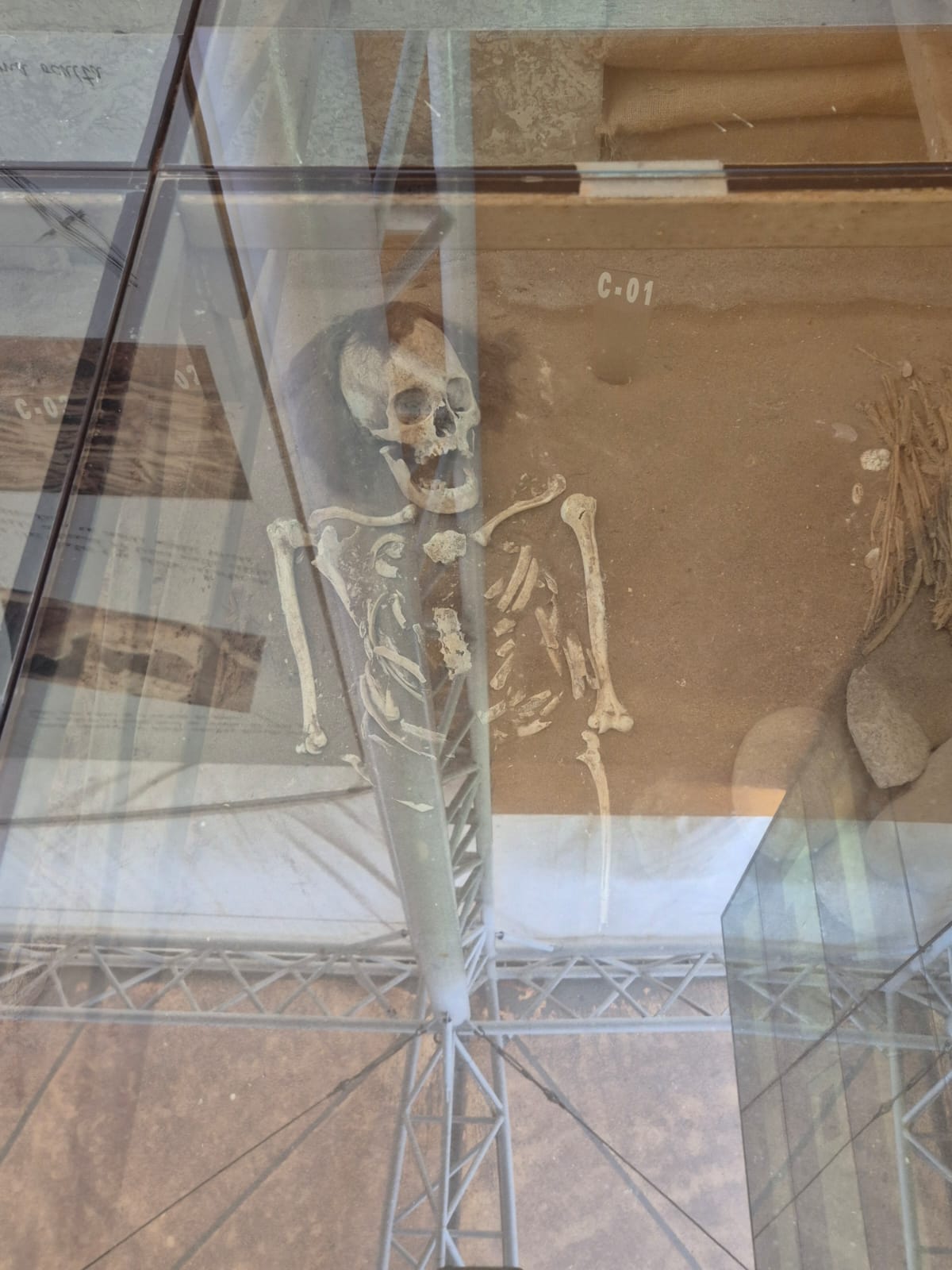
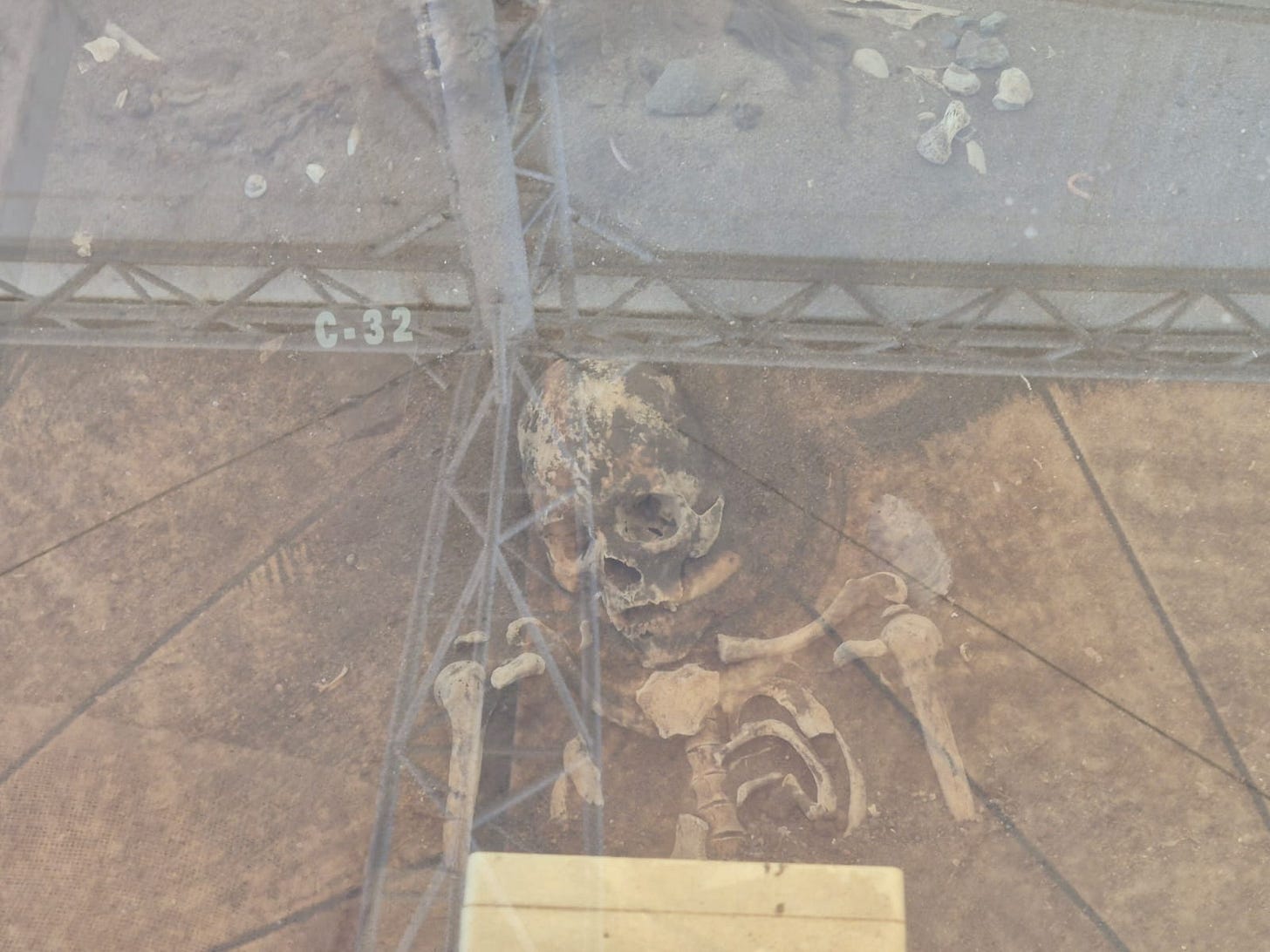
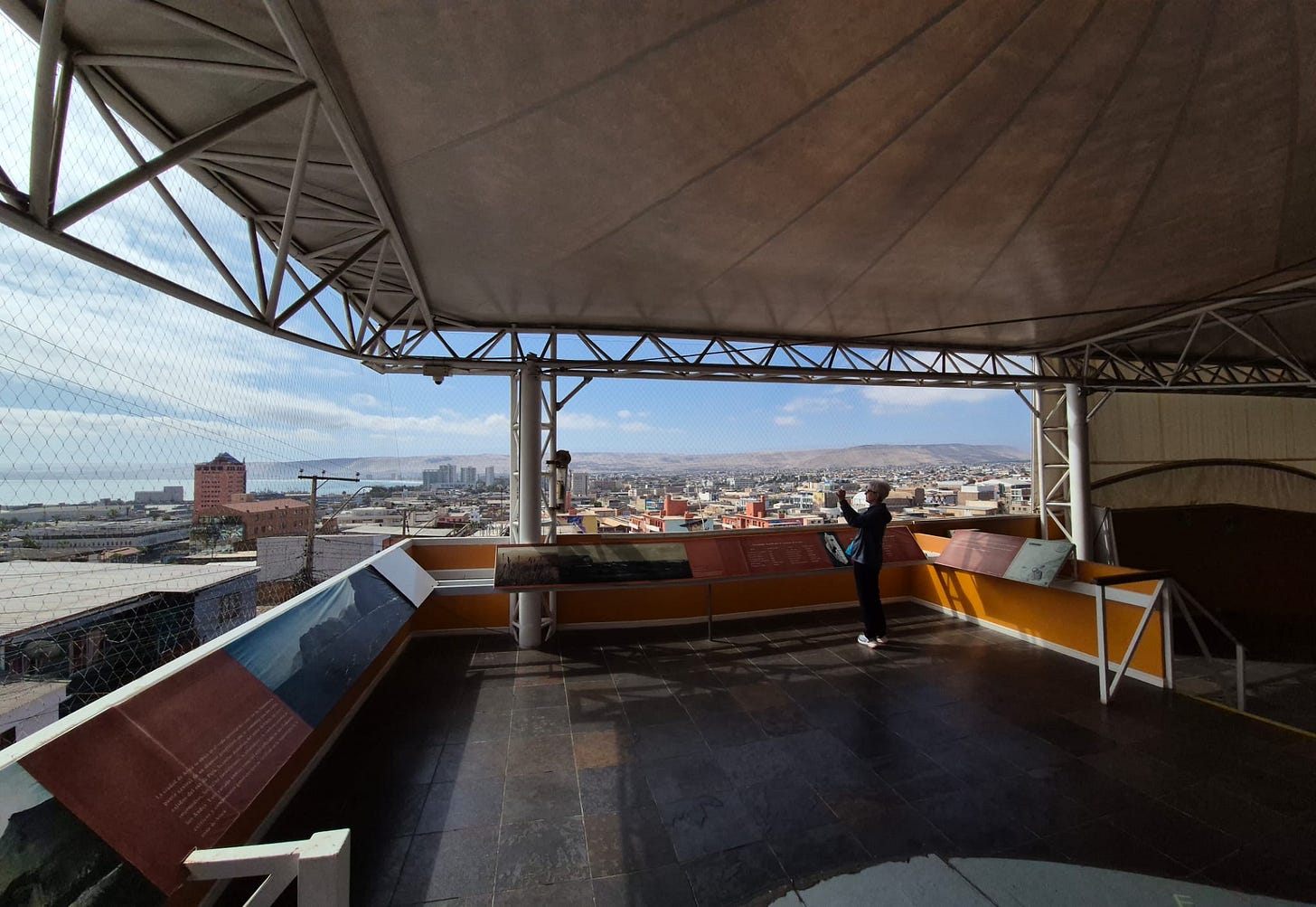

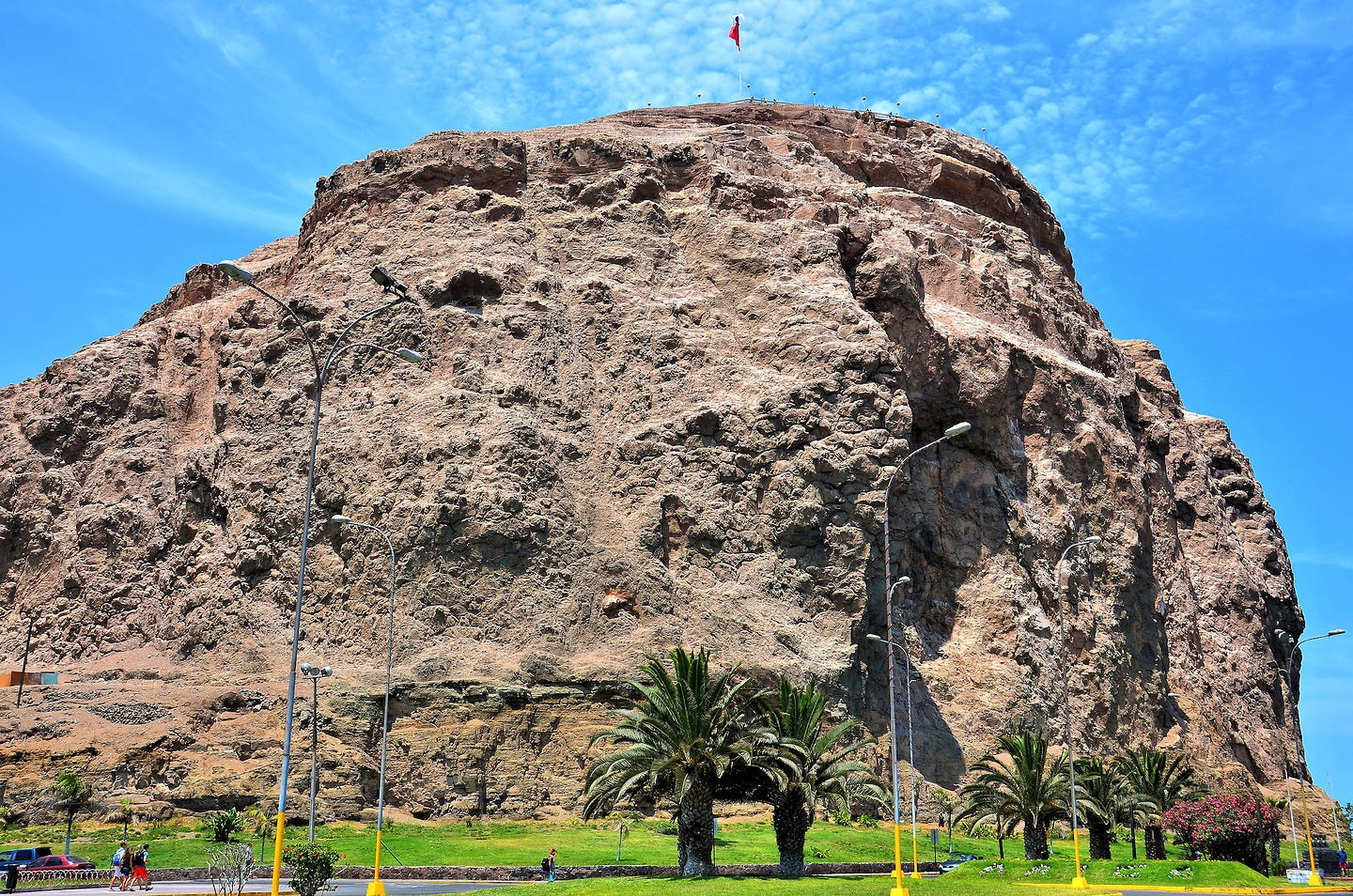
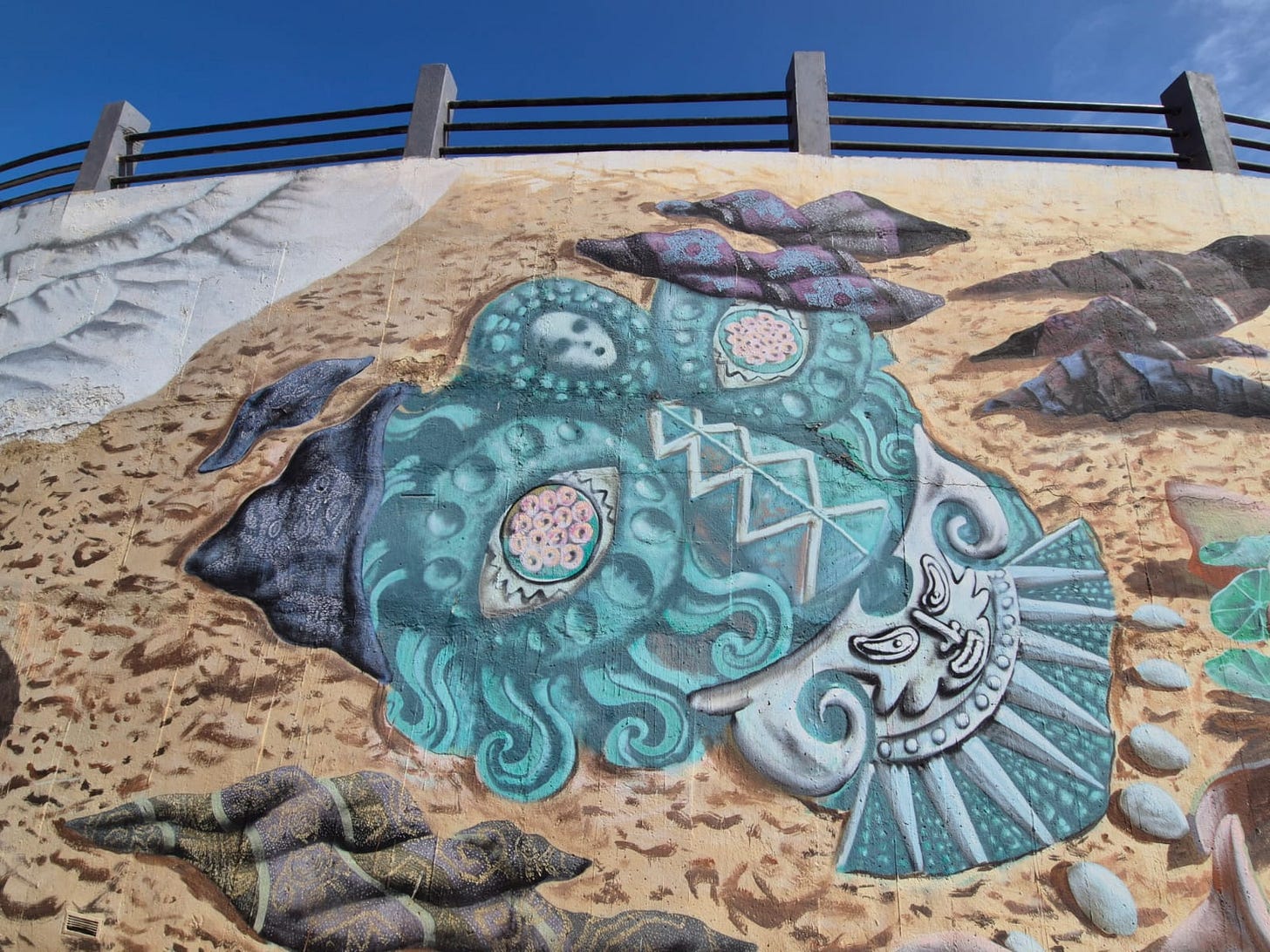
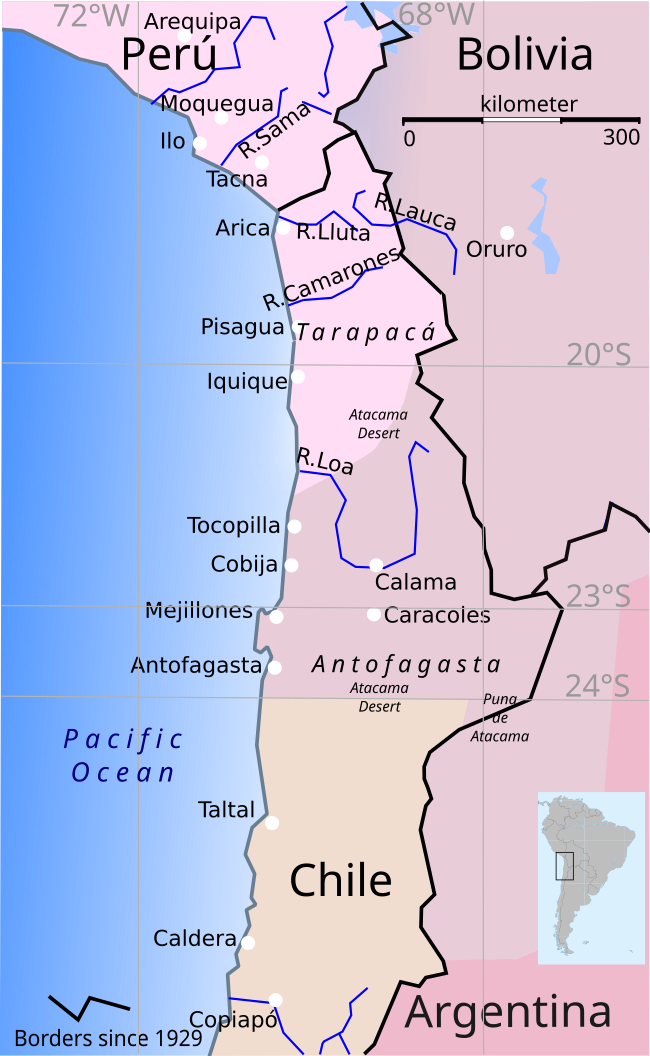
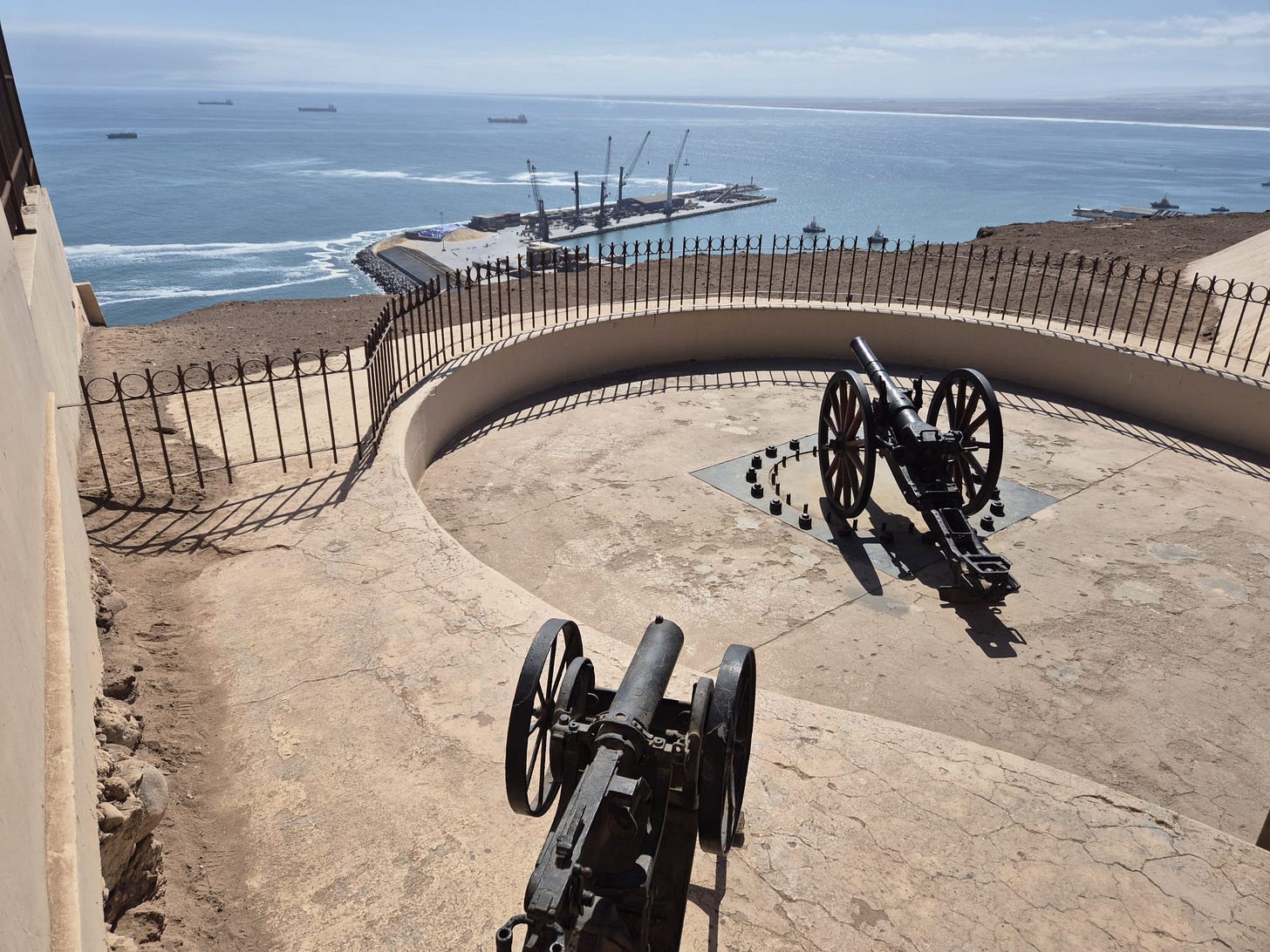

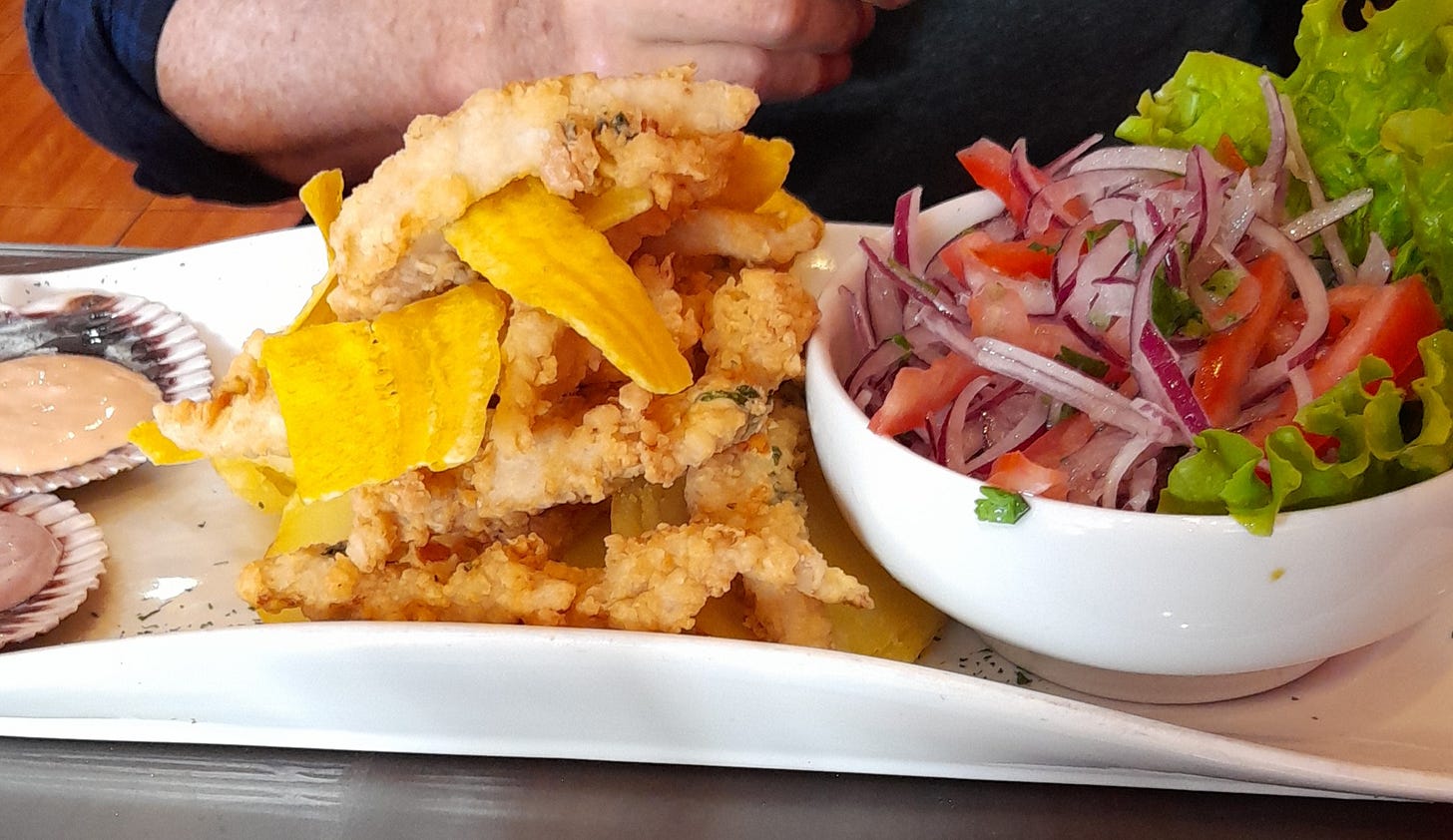
Love reading your updates. What a fascinating trip.